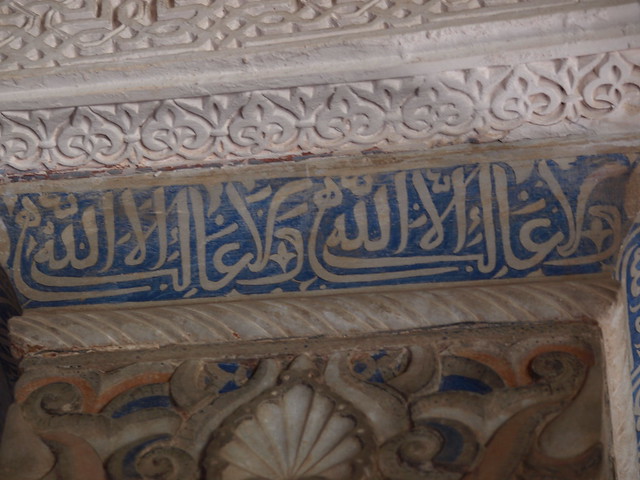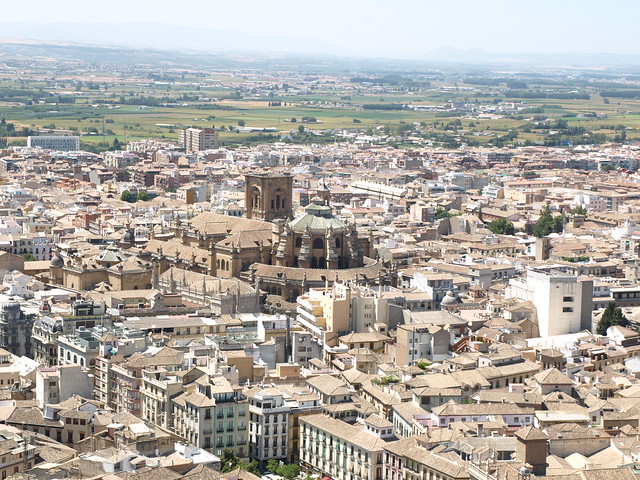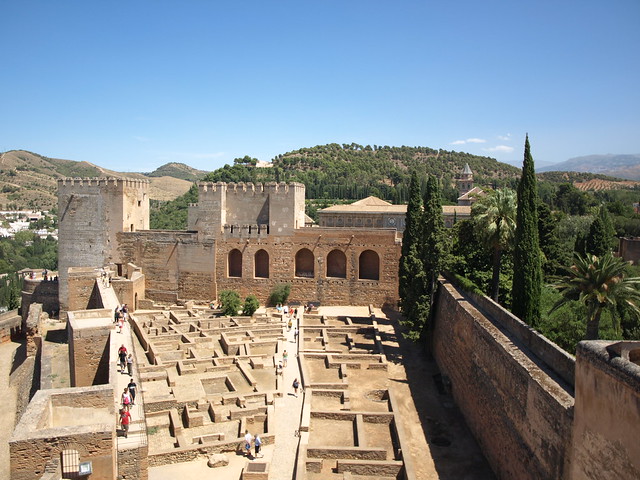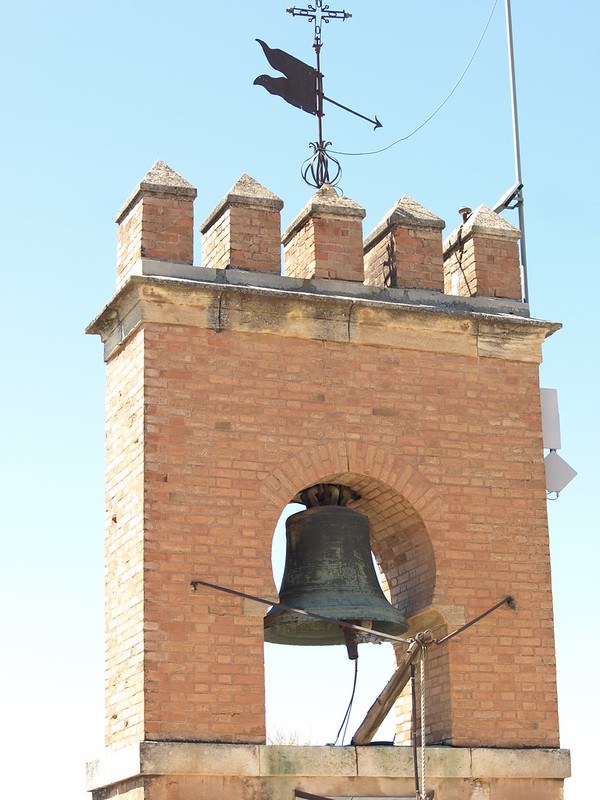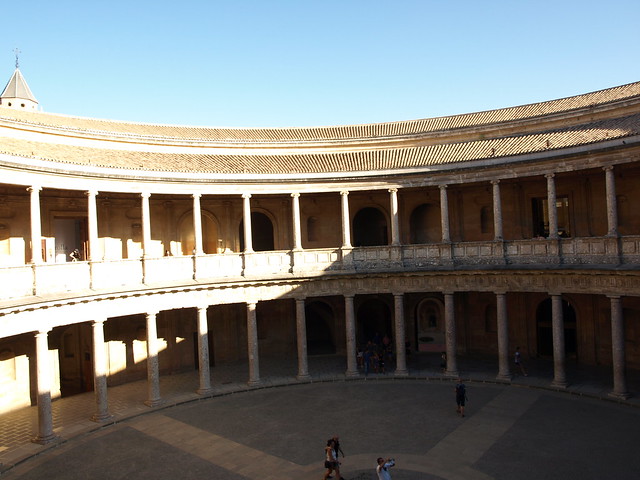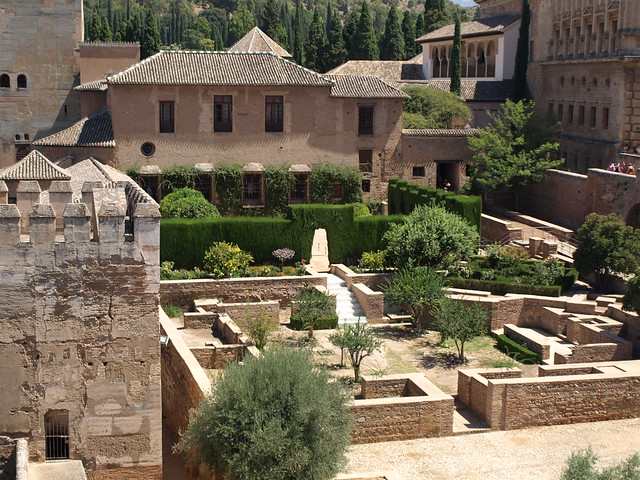Driving in Southern Spain could be that exciting, I did not realize. A chance difficulty created an opportunity to drive a bit longer.
Going a bit into details, it runs like this:
When we arrived at Marriott AC Suidad in Seville on a Tuesday, the front desk know-it-all Allejandro handed us the message. It was from the tour company. The next day trip to Cordoba was cancelled as there was an 'event' in the Mosque. They had arranged Cordoba on Thursday but that was the day of our already-booked ticket to Alhambra. That could not be changed. The whole Andalusia plan has to be rearranged which took the next few frantic hours, included a change in driving plan. Originally we had Avis rent a car Thursday from the airport and go straight to Granada. Now we had to hit the road earlier on Wednesday and go to the coastal trip a day ahead, reach Granada on Thursday, come back the same day to Seville and go to Cordoba on Friday.
It was impossible to change the Avis contract. It was costing us another $400. Allejandro told us of a rental car facility in the city. It was Seville Motors, next to the fountain dedicated to Seville Poets,
Funte Generation del 27. The office was full of spaceships posters and a Beatles tour poster. (Many of the English songs played in Spain restaurants are from 60's and 70's) Mr Altagracia was an interesting man; chain smoker like every second person in Spain, he was very cordial. The deal was not bad at all. It will be 44 euro a day and will have to give a deposit of around 370 Euros, GPS will be extra 30 Euros for three days. That will be the highest price we would have to pay in case of anything going wrong. We returned the car at the same dial for petrol as we receive with no credit for less use. We will pick the car the next day and return it on Saturday morning, before leaving for Barcelona.
When we finally returned the car, the security money was added back to the credit card,
"retribucion" as he called it. He also
retributed one day of GPS as it did not work. He just took my word for it. I asked if I can get any credit for the gas tank, I got it a quarter full and returned it more than half, he said there is no
devolusion for that.
The next day car was ready for us. Colt, red all set to go and I realized it is stick shift. I had not driven stick shift before, except a few tries on friend's cars back home in Pakistan. I really learned how to drive in the USA and have always driven automatic cars. Mr Alta Gracia graciously hid his displeasure, made a few calls, and after another thirty minutes we had a foxy Colt and the daily rent went up to 77 euros.
This delay would cost us a few things later that day. First, we lost our way back to hotel, where we had to go to pick up the kids. In fact we lost the way quite a few times. GPS was tricky and one has to know how to use it. It was the same one as one gets on rental cars in USA.
Roads are wide and highways are fun to drive. There are ample places on the way to stop for gas and food, except when you really need it.
On our way south to Gibraltar, I realized that although the gas was all full in the first car, the second car which we eventually took with us had its gas at only one quarter. I had to go out of the highway and search for a gas station. Those were a few tense moments, but ultimately got a gas station in a rather remote town off the highway.
Gas is very expensive in Spain, perhaps it is everywhere in Europe. The scenic drive south towards Jerez and then towards Gibraltar is full of mountainous villages with white roof tops. Many are known, I later found out, for their off the road tourist attractions.
Gibraltar: photo album

Gibraltar can be easily missed on the highway unless one looks for it. We were warned about it in the tour book of Rick Steve, but did not realize who true it was. Gibraltar has snubbed Spain's effort to get it back from UK. Even when UK was agreeable with that, the Gibs (as they call themselves) voted against been annexed by Spain. So Spain makes sure that it is not given any special status. Even Mr Atla Gracia in Seville was a bit amazed why we wanted to go to Gibralter. 'May be one hour or so to have some shopping' is what he said.
When ultimately you get the exit, you drive another half an hour into Gibraltar. The best view of the rock is on the way to Gib. A tall cliff overlooking the Mediterranean. At the border, they checked the passports and let us in.
It is a long strip of land, a hilly place and all the way at the end is the cable car to the top of the cliff. Our delay at Seville cost us here, as the cable trips close at around 5 pm and we were just pass that time. Eventually found a place to park the car and had a stroll down the Main Street. That is the main shopping street, open only to pedestrians. Saw a lot of Indians storekeepers ie Pohoomull, Alwani, Paaram Anand, Vijay etc (none of which we had seen in Spain) and many middle easterners.
Although it is somewhat a short trip to UK while travelling in Spain, things are more like Spain than UK. Although there is a large banner celebrating the golden jubilee of Queen Elizabeth, stores deal with dollars, pounds and accept euros like the rest of Spain. Driving is also right hand drive like Spain, and not like Britain.
Haleema had lost her sunglasses so we bought then at Vijay on Main Street; had pretty steep prices. We had food at Pizza Hut and had tea at the Square Cafe in the Casemates Square.
Costa Del Sol:
Driving on the highway along the Mediterranean in Spain is one of the best scenic routes. Sea on the south and mountains on the northern side. Beaches all along studded with small towns. There are two parallel roads, one near the sea level, a sort of local route which takes you through scenic winding roadways through all the sea towns, and the other at an elevation, a highway, much faster with better scenes on a bigger canvas. Usually a pairing town is up inland along the highway. When you drive you realize that they do not call it the Sunny Coast, Costa del Sol for nothing.
It is mostly populated by North Europeans, many Britons, and they have a mixed British Spanish accent. The most famous city along the line is Malaga, another is Marbella . We had planned to go to Nerja, half an hour further.
It took a while to get out of Gibraltar as it was the end of the day and many were leaving. By the time we were back on the highway on our way to Nerja it was close to sunset. And then the GPS stopped working. Perhaps it was the hilly terrain or the battery ran out, whatever, it was a pretty uncomfortable situation. We were assuming that it will show up on the road signs, but it did not for a long time. I think unless it is the next big town, the sign does not show up. Temperature in the car started to rise when we left Malaga behind and still there was no sign of Nerja . We had to get out of the highway to get a human contact to confirm we were on the right way. It was at the exit of Benagalbon, we found a gas station. It was locked up at night, as you see in Bronx and Harlem, and all the negotiations are through the double glass window. Yes, we were in the right direction. I bought a large area map, something we should have had all along. One of those things we tend to forget now that all-knowing GPS is available. One fails to acknowledge the importance of the old time map.
As most of the coast line was driven at night, we missed the appreciation of scenic route. We were able to make up for that the next day, when we traveled to Granada from Nerja. Breathtaking scenes further east up to Motril and then drive up north through Sierra Nevada Mountains to Granada on Highway A44.
Nerja: ( nar-kha)
photo album
It is a small town, which claims itself to be Balcony of Europe. Although in Andalusia, this has a different feel than rest of Southern Spain. It is mostly populated by Northern Europeans. These small towns have a festive atmosphere which lingers on late into night. You walk up to the 'Balcony of Europe". It is on a bluff, jutting into the sea, built on the site of a former fort which was destroyed in Earthquake.

The Nerja castle was a part of the lookout system in the centuries after the Muslims were sent back into the sea. Pirates attacks from the Muslim North Africa picked up after the Christian Reconquista. These lookout castles were built within the sight of one another all along the coast. These places which were beyond the tightly security zone of Gibraltar. They are also favorite spots for illegal immigration and drug runners coming in form Africa.
We were able to get into Hotel Plaza Cavana, which is right in the middle of the courtyard which leads into the Balcony of Europe. I did not realize at the time of booking that they would offer a rebate if we mention Rick Steve's name. I did on checkout and they did honor that. One more thing to thank Rick Steve for.
Nerja was where the home situation was most tense during the trip. It was end of a long tense night drive, and busy two days ahead of us. One day to Granada and the next to Cordoba. Kids did not have the time they need to absorb, contemplate and write. But all this also gave an opportunity to interact in a way we have not done for a long while: tense situations, and dealing with all as adults.
Granada To Seville:
The next day, on Thursday, after finishing the tour of Granada, and having a sumptuous dinner at Hotel Guadalupe overlooking the Alhambra parking lot, we drove in to the night to Seville. It was a full moon night, and although we lost our way one more time, it was rather a straight highway. Some road signs were in Arabic pointing towards Algeciras aka
Aljazeeratul Khizra.
This would have been a common route in the eleventh to fifteenth centuries, when Granada survived after the fall of the rest of the Muslim Spain. Seville was the seat of the kings in southern Spain and that would have been the final way the Christian Monarchs would have traveled down the victory lane to Granada.
I could not help appreciate the fact that we, Pakistani living in America, with kids born and raised there, now travelling in the middle of a full moon midnight, on an almost empty highway in the middle of Andalucia, and feeling no fear or apprehension. I wondered I could not have done that in Pakistan; or if had done that, would not have felt safe at all.
It is a testimony, but testimony to what. Globalization, security or a paradox. Societies which have come to term with their past, and are able to look forward, are able to feel secure and let others feel secure. Whereas when insecurities abound, one feels threatened in one's own home.
Granada next, and then Cordoba.
